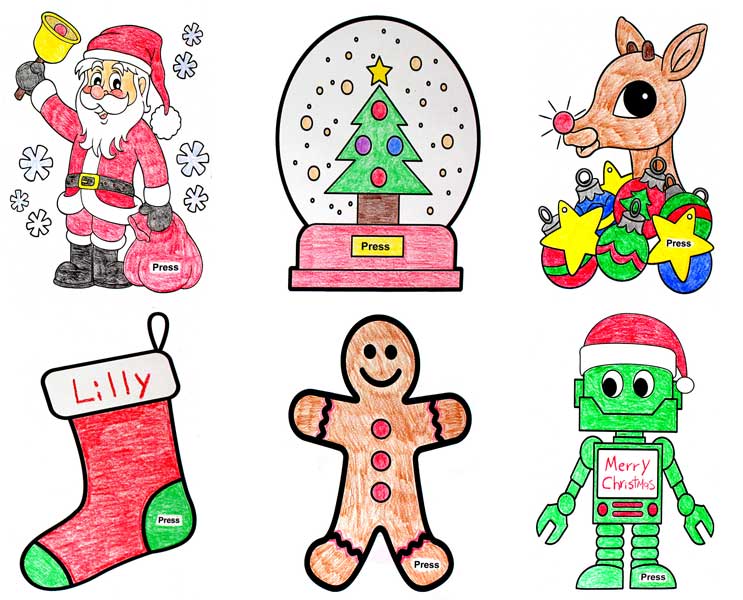
Get into the holiday season by making these Christmas light-up cards using paper circuits.
Learn how to create a simple circuit using copper tape, a coin cell battery and an LED light.
This tutorial include (6) FREE project templates in black and white outline. Once your circuit is created you can color and decorate your card.
Project Time: 15 Minutes
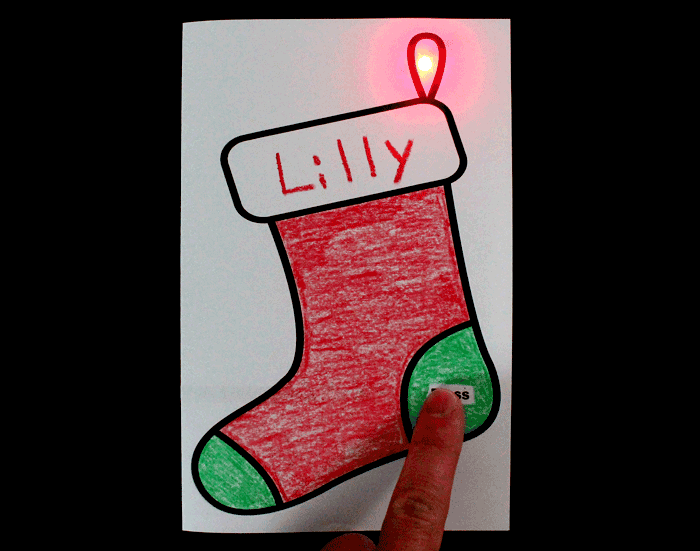
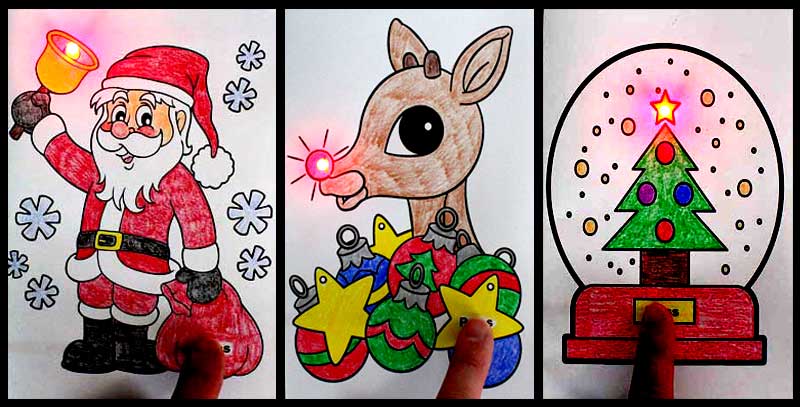
Materials Needed
- (1) LED – Any Color
- (1) CR2032 Coin Cell Battery
- Copper Tape w/ Conductive Adhesive
- Project Templates (See Below – Step 1)
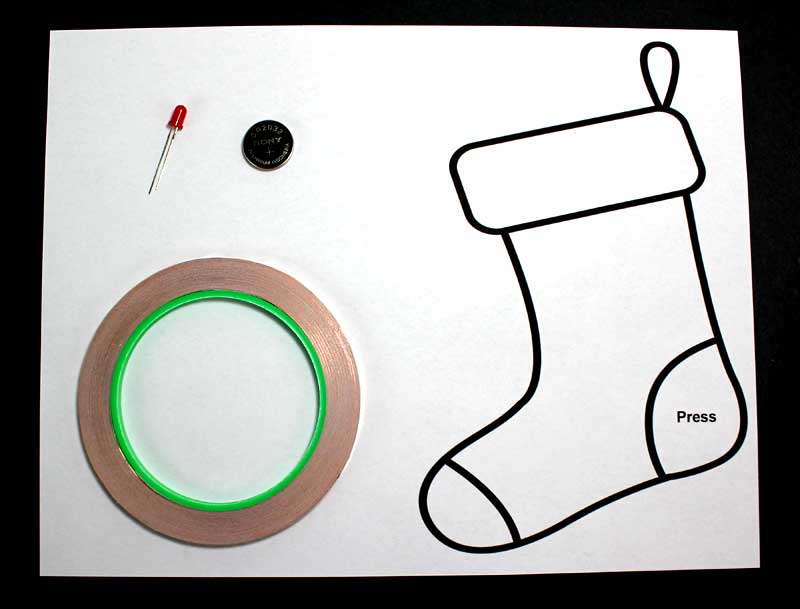
Need the materials for this project? We have a paper circuit starter kit & ebook available. The kit includes copper tape, LEDs and CR2032 batteries. Also included is a project ebook with 45 project templates.
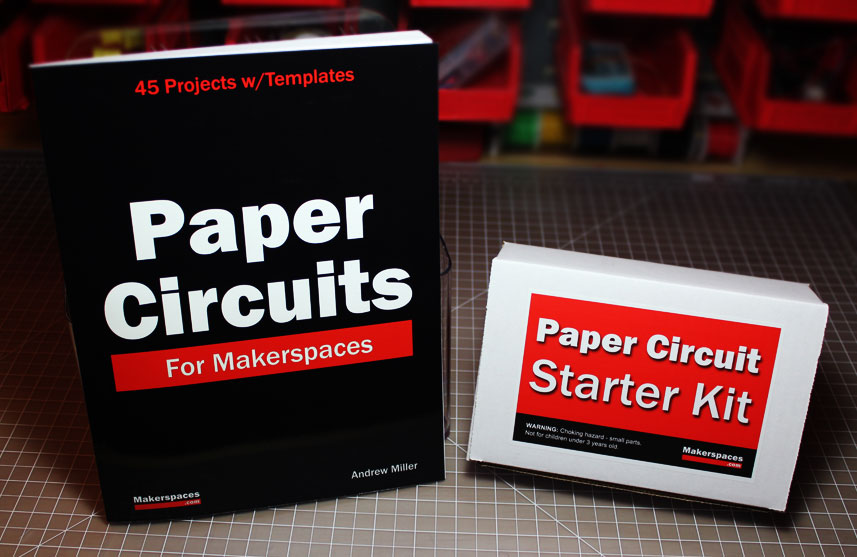
Step 1 – Print Project Templates
Download the light up card templates using the links below:
- Christmas Stocking – PDF
- Santa w/ Bag – PDF
- Snow Globe – PDF
- Rudolph Red Nose – PDF
- Gingerbread Man – PDF
- Robot Santa – PDF
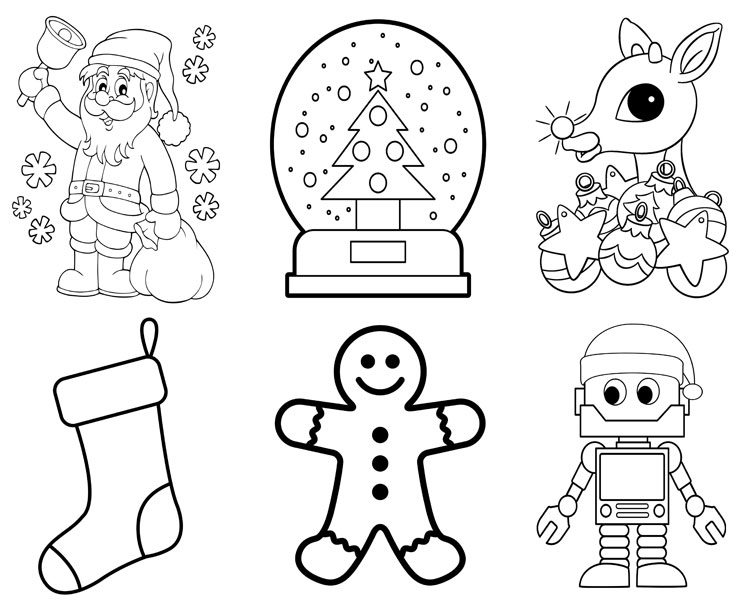
NOTE – Looking for more templates? Check out our other Christmas paper circuit tutorial w/ 4 additional designs.
Select the template you want and print it on white or colored paper. These templates come in black and white outline.
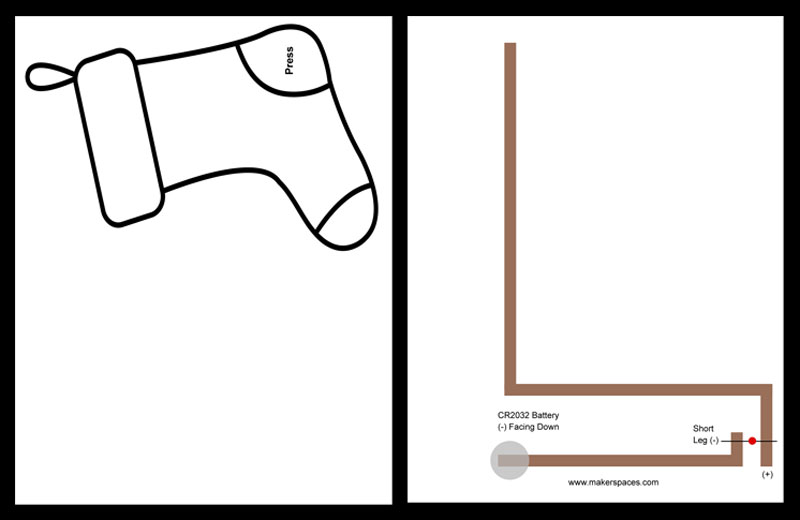
Each project template is (2) pages and it’s recommended that you use two-sided printing on one sheet of paper. This will make your light-up card look and function better. This project will still work if you need to print it on 2 separate sheets of paper.
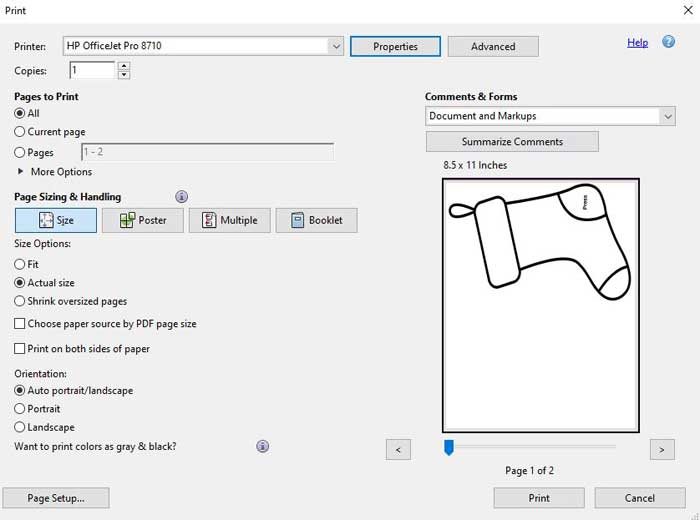
Print the template you want to use and select “Properties” in your printer settings. There should be a section to select 2-sided printing.
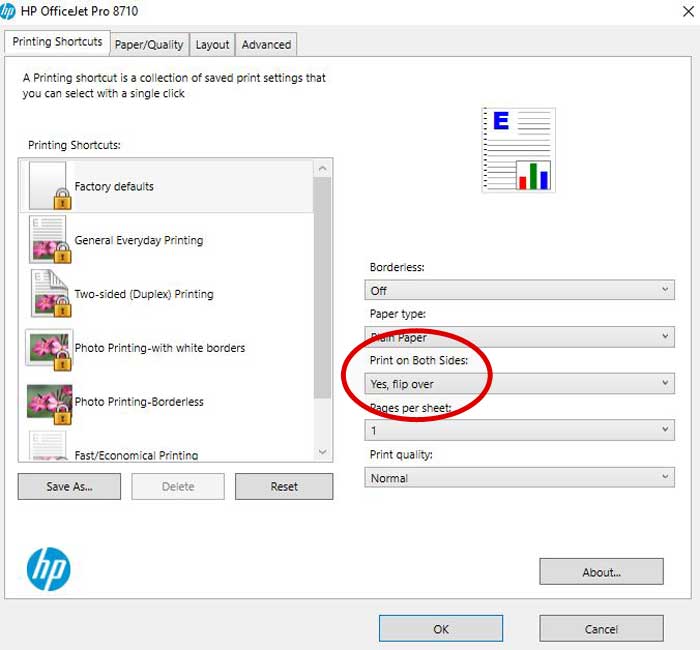
Step 2 – Color, Cut & Fold
Once you print your template, now is the best time to color or decorate the front design.
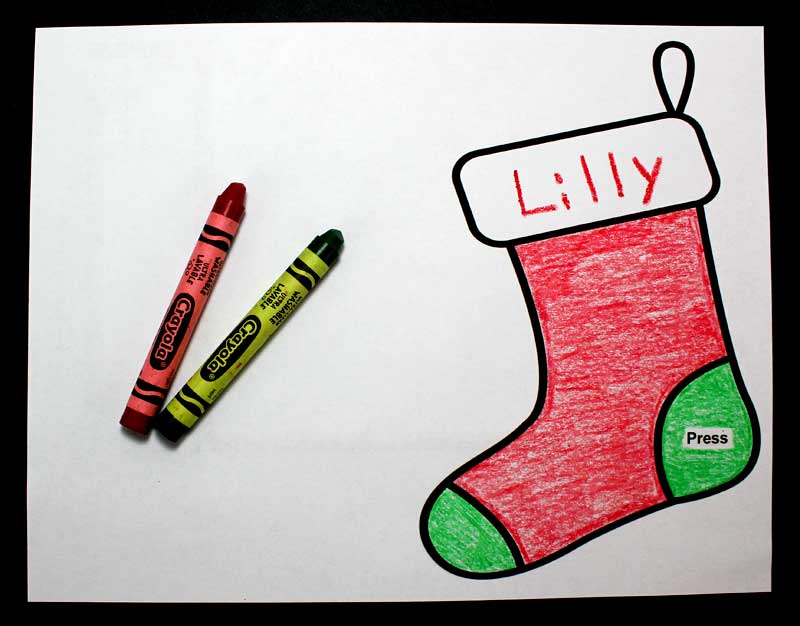
After you finish coloring the template, cut an “X” where the LED will go. The last step is to fold your template in half.
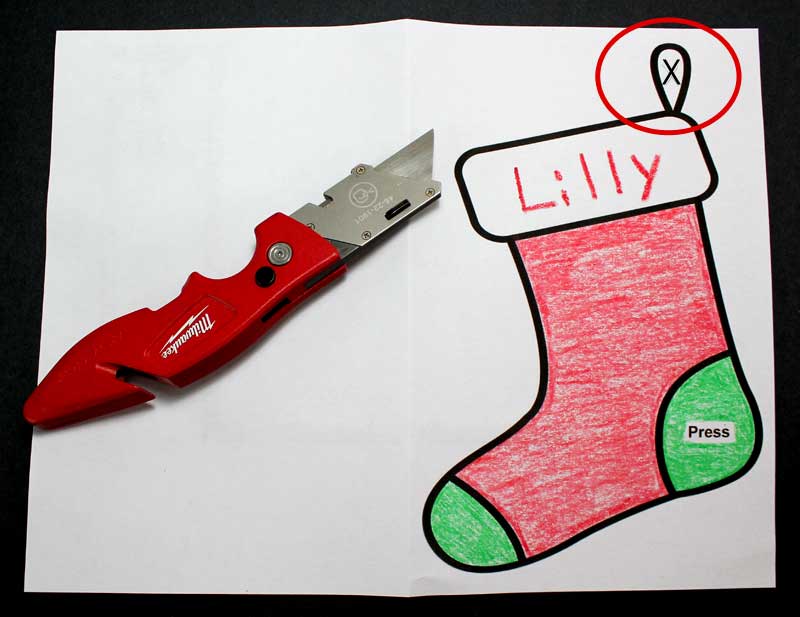
Step 3 – Apply Copper Tape
Flip your template over and apply copper tape to all of the brown lines. We recommend folding the copper at the corners versus cutting it. Keeping the copper in a single continuous strip will help with its continuity ensuring the LED lights.
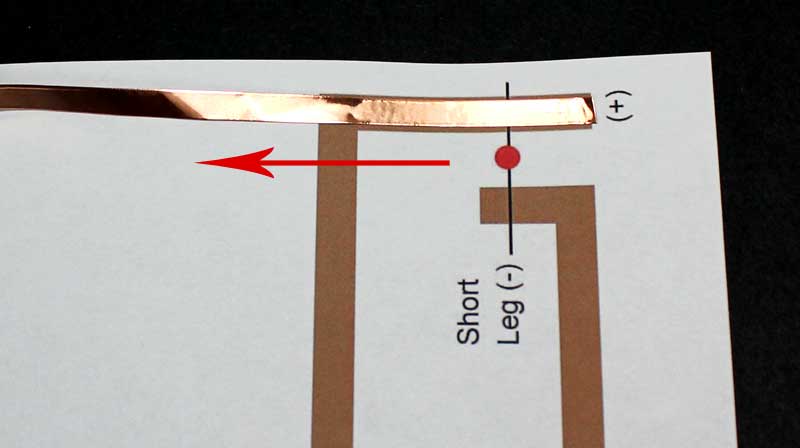
Begin by applying the copper tape straight to the corner.
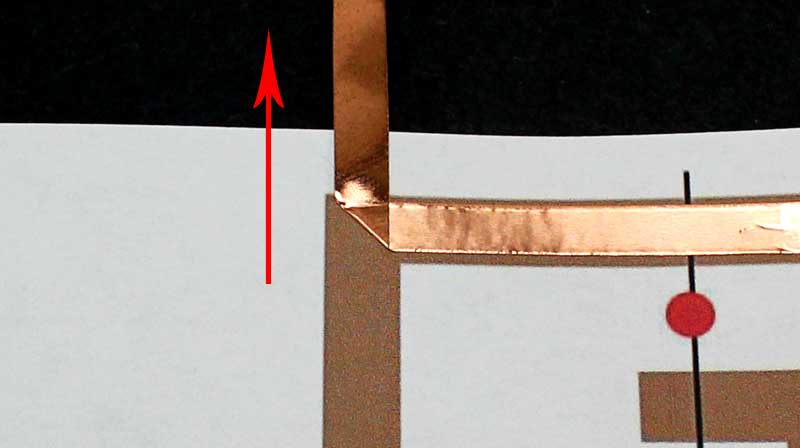
Next, fold the copper up in the opposite direction that you’re trying to go.
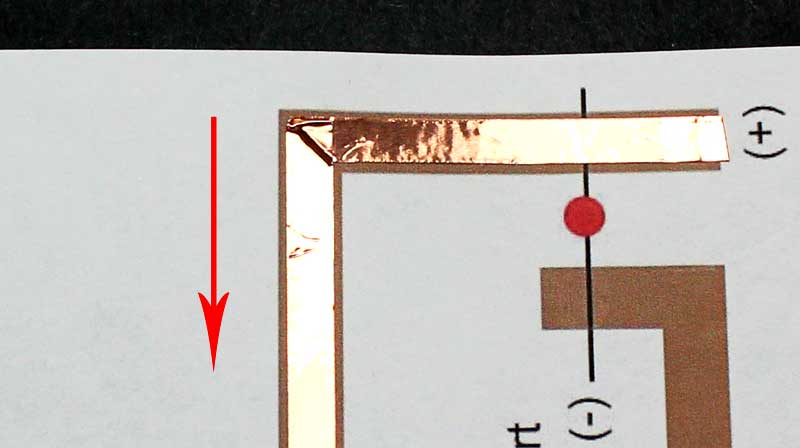
The last step is to fold the copper back down along the brown circuit line.
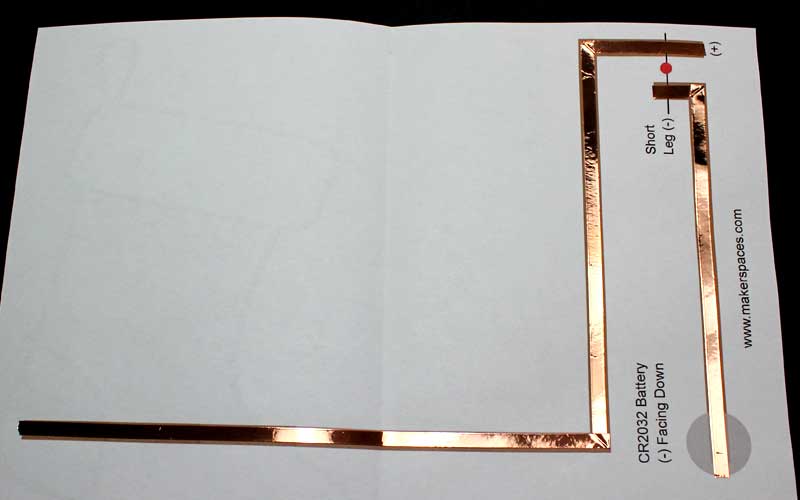
Step 4 – Attach The LEDs
The next step is to attach the LED to the template. Before you can do this, you need to determine which side of the LED is positive and negative.
Every LED has a long leg and short leg. The long leg is the positive (+) and the short leg is the (-) negative.
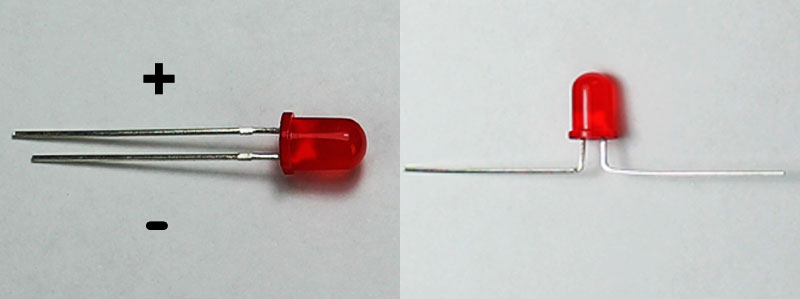
Bend both of the legs at a 90 degree angle but remember to note which leg is the positive side.
Place the LED on the copper tape with the correct leg on the positive and secure it with copper tape on top. Rub the copper tape to ensure it’s making firm contact.
NOTE: If your LED leg is too long, you can bend it along the circuit as shown below on the positive side.
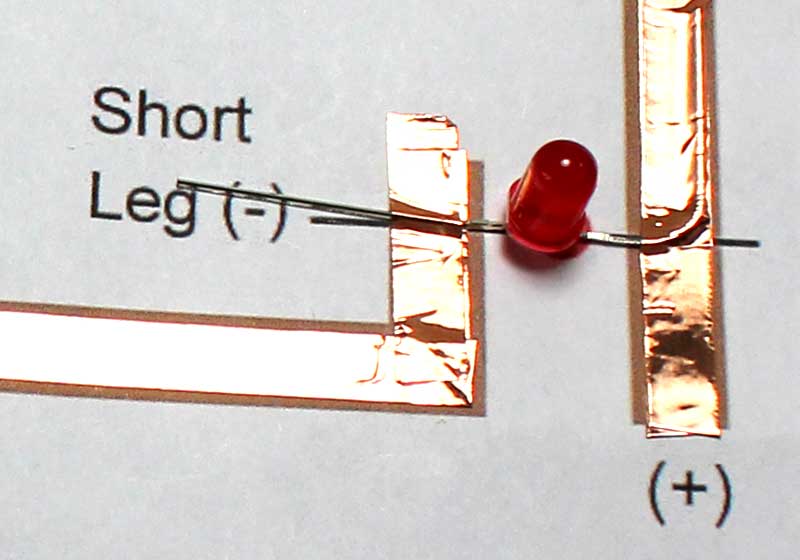
Step 5 – Mount The Battery
Cut a short strip of copper tape and roll it in a ball with the conductive adhesive facing out. Place this ball in the battery circle on top of the copper tape circuit.
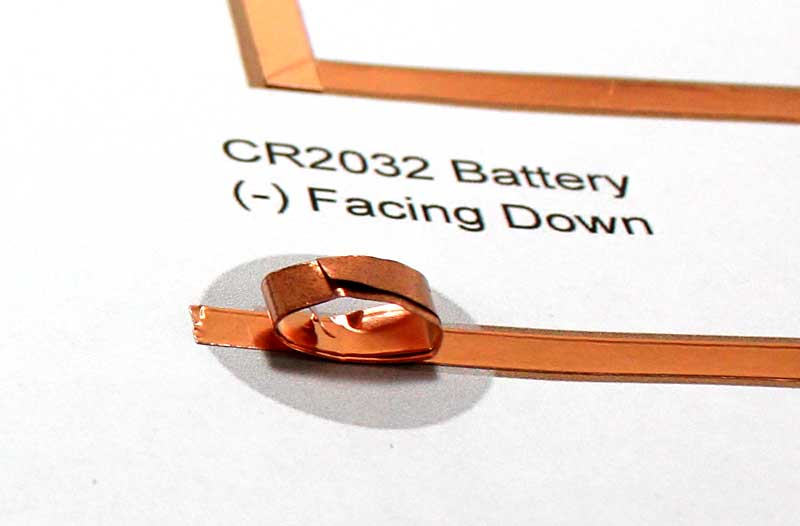
Place a CR2032 coin cell battery on top of the sticky copper ball with the negative (-) side facing down.
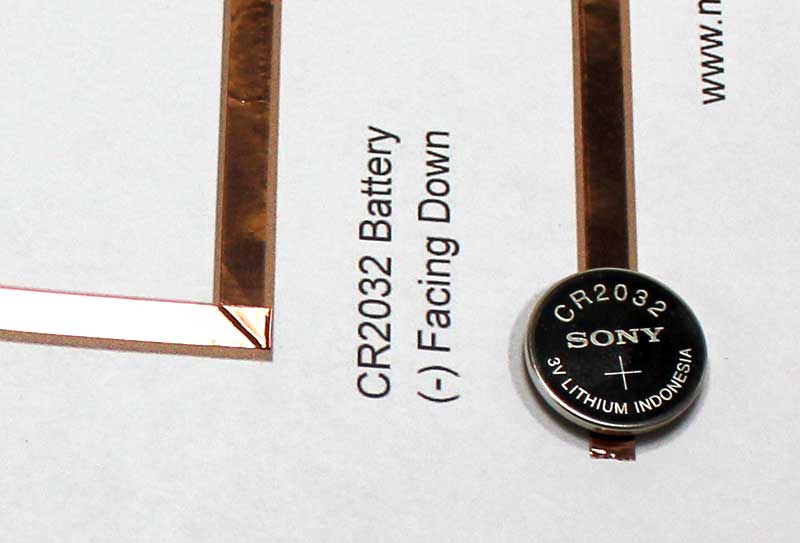
Step 6 – Test The Circuit
At this point your circuit is complete. Fold the card and push the LED through the “x” you cut earlier.
Press the section marked “Press” to test your circuit.
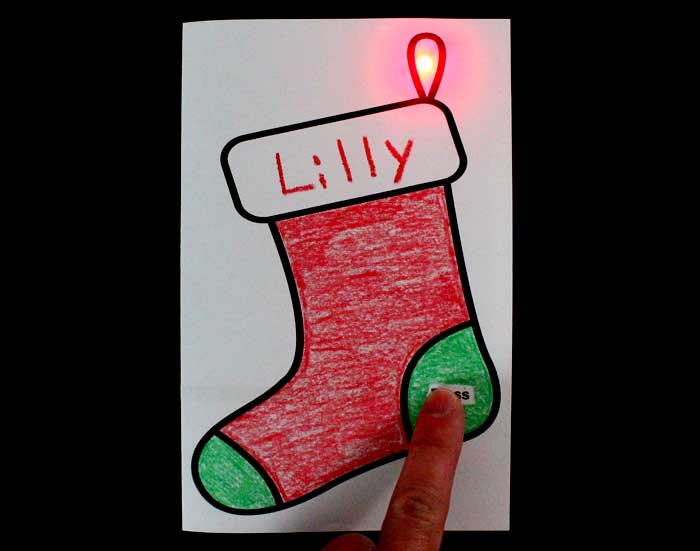
Show Us Your Project
Follow us on Twitter at @Makerspaces_com and tweet us if you made this or another project. We love seeing your makerspaces and the creations you’re making.
If you’re looking for more paper circuit projects, please check out our ebook which has 45 project templates along with our paper circuit starter kit.

Looking For More Projects?
Our blog has a lot of free paper circuit and makerspace projects. Check it out for more free templates and tutorials.
